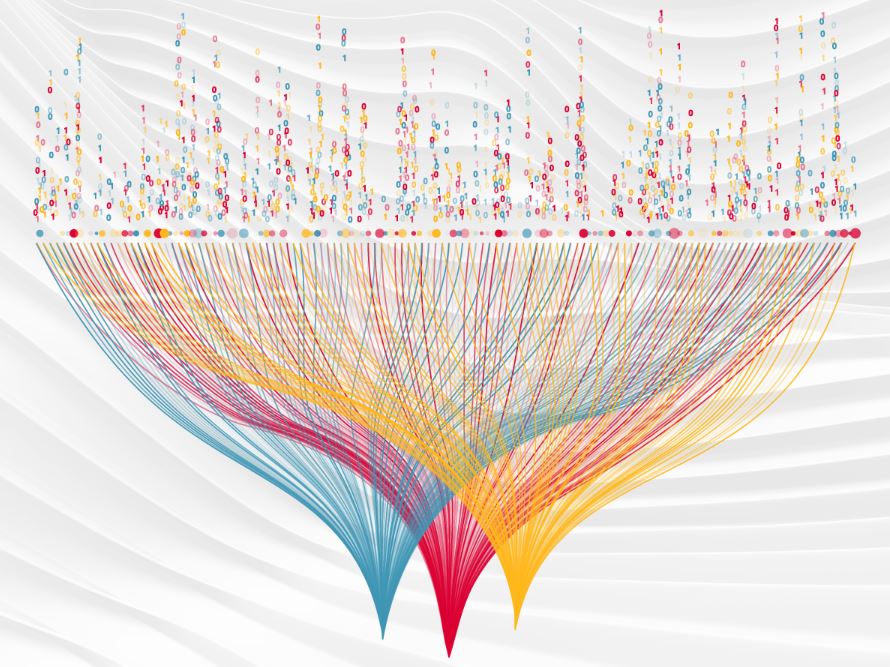
Enter data fabric, an innovative architecture that facilitates seamless data migration, enabling organizations to utilize their assets with greater agility and efficiency.
This post will demystify data fabric while exploring its role in data migration as well as provide actionable insights on how solutions may leverage this powerful approach.
Understanding Data Fabric
A data fabric is an architectural approach to data management that unifies multiple environments (whether on-premises or cloud) into one cohesive view of data. It integrates different sources, providing one centralized source of information.
Businesses often face the need to manage large volumes of information without difficulty, while still having it readily accessible and useful for their operations. This innovative concept was first proposed as a means to combat data sprawl by providing seamless access and use.
As organizations increasingly generate data, traditional data management methods often fall short in keeping pace with demand. Data silos, inconsistent formats, and various storage locations can impede data accessibility and delay decision-making processes.
Data fabric addresses this challenge directly by providing an environment where information flows smoothly, and stakeholders can gain insight without unnecessary delays.
Data Fabric strives to simplify data management, making it easier for enterprise solutions architects to handle complex data migrations more efficiently and securely.
With its comprehensive approach, organizations can maintain data integrity, security, and compliance throughout this migration process.
Enterprise Data Migration Is Crucial
Enterprise solution architects face high stakes when it comes to data migration. A successful migration guarantees that critical information remains accessible in an on-time fashion, but its complexity may lead to unexpected obstacles.
For instance, data corruption during migration may wreak havoc with business operations and decision-making processes.
As more enterprises migrate towards hybrid and multi-cloud environments, migration becomes an even greater priority.
Data fabric plays a pivotal role in this regard by connecting on-premises environments seamlessly to the cloud.
This helps enterprises to reduce risks associated with data migration while extracting maximum value from their assets.
By taking advantage of data fabric’s seamless connectivity features between on-premises environments and cloud ones, enterprise architects can ensure maximum value from data assets across their organizations.
Key Components of Data Fabric
Understanding the components of data fabric is vital to enterprise solution architects seeking to implement it successfully.
At its core, data fabric consists of several key elements that work in concert to form an efficient data management environment.
Integration is at the core of data fabric. This involves gathering together data from various sources and formats into one cohesive view for easier management and access by organizations, regardless of its origin or format.
By employing efficient integration mechanisms, organizations can ensure their data remains accessible regardless of its source.
Data Governance is of critical importance in today’s enterprises, especially when dealing with sensitive information.
Effective governance frameworks enable organizations to establish policies and practices to maintain data integrity throughout the migration process.
Data orchestration is key to effectively overseeing data workflows and processes.
Through automating data movement and transformation tasks, enterprises can reduce manual intervention and streamline operations while solution architects focus on higher-value tasks such as developing novel solutions and insights.
How Data Fabric Simplifies Data Migration
Integrating data fabric into data migration processes provides enterprise solutions architects with numerous benefits, most significantly reduced complexity.
Through data fabric, organizations can streamline their migration efforts using one unified architecture connecting disparate systems and sources.
Data fabric ensures seamless data flows during migration by providing real-time access and connectivity, eliminating disruption caused by data silos, and ensuring all pertinent information remains accessible throughout the migration process.
Solution architects can rely on it to ensure timely access to relevant information during every stage of migration.
Data fabric also improves data quality and consistency during migrations, making sure data remains accurate and uninjured as it moves between environments.
Thanks to validation and cleansing mechanisms built into data fabric, architects can ensure data remains undamaged when transitioning data between environments.
This helps minimize errors that might threaten its success and ensure its success.
Data fabric provides significant advantages in supporting advanced analytics and insights. After migrating and integrating their data through data fabric, organizations can leverage advanced analytical tools to extract valuable insights from it.
This gives enterprise solution architects the power to drive innovation through data-driven decision-making processes.
Real World Applications of Data Fabric in Data Migration
To appreciate the potential of data fabric for data migration, it’s crucial to explore real-life applications.
Consider a large financial institution that must migrate its customer data from legacy systems onto an innovative cloud-based platform, where complexities such as data silos, inconsistent formats, and compliance regulations present formidable hurdles.
Implementing a data fabric architecture allows an institution to craft an effortless migration strategy. The unified view of data allows architects to evaluate data quality and identify any inconsistencies prior to migration.
Real-time integration ensures customer information remains accurate and accessible during this process, mitigating disruption risk in operational practices.
Healthcare is another sector where data fabric can help simplify migrations of patient records to an electronic health record (EHR) system, protecting sensitive patient data while adhering to healthcare regulations.
Data fabric plays a fundamental role in data migration, helping organizations quickly adopt new technologies and solutions without jeopardizing data quality or security.
Implementing Data Fabric: Key Challenges
Data fabric presents numerous advantages for enterprise solution architects, yet its implementation presents numerous obstacles.
One major roadblock involves the complexity associated with integrating existing systems and data sources into the new architecture.
An organization’s technology landscape typically comprises legacy systems, cloud solutions, and on-premises apps from different providers. This creates an array of legacy, cloud, and on-premises systems that can be both costly and time consuming to integrate together seamlessly.
To overcome this difficulty, enterprise architects should develop a data integration plan that outlines how various systems will integrate within its data fabric.
Ensuring data governance and compliance across an enterprise’s entire data fabric presents another significant challenge. Establishing effective governance frameworks takes constant work between all stakeholders involved.
To comply with regulations, businesses must establish clear policies regarding access, usage, and security.








